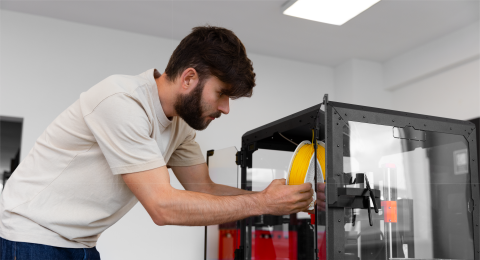Exploring the World of 3D Printing
Exploring the World of 3D Printing
3D printing, also known as additive manufacturing, is revolutionizing the way we create and manufacture objects. This innovative technology allows for the creation of three-dimensional objects from a digital file, layer by layer, using various materials such as plastics, metals, and even biological cells1.
How Does 3D Printing Work?
The process begins with designing a 3D model using computer-aided design (CAD) software. Once the design is complete, the file is sent to a 3D printer. The printer then reads the file and starts creating the object by depositing material layer by layer until the final product is formed2.
Applications of 3D Printing
3D printing has a wide range of applications across various industries:
- Healthcare: Custom prosthetics, dental implants, and even bioprinting of tissues and organs.
- Automotive: Rapid prototyping of parts, custom tools, and even entire car components.
- Aerospace: Lightweight parts for aircraft and spacecraft, reducing weight and improving fuel efficiency.
- Consumer Goods: Custom jewelry, footwear, and household items.
- Education: Hands-on learning tools and prototypes for engineering and design students.
Benefits of 3D Printing
- Customization: Easily create custom objects tailored to specific needs.
- Speed: Rapid prototyping allows for quick iteration and development.
- Cost-Effective: Reduces waste and material costs by using only the necessary amount of material.
- Complexity: Capable of producing intricate designs that would be impossible with traditional manufacturing methods1.
Getting Started with 3D Printing
If you’re interested in exploring 3D printing, here are a few steps to get started:
- Learn the Basics: Familiarize yourself with the different types of 3D printers and materials.
- Choose a Printer: Select a 3D printer that fits your needs and budget.
- Design Your Model: Use CAD software to create your 3D model or download pre-made designs from online repositories like Thingiverse3.
- Print Your Object: Follow the printer’s instructions to print your design.
- Post-Processing: Depending on the material, you may need to clean, sand, or paint your printed object.
3D printing is an exciting and rapidly evolving field with endless possibilities. Whether you’re a hobbyist, a student, or a professional, there’s something for everyone in the world of 3D printing.
3: Thingiverse 1: Wikipedia 2: 3DPrinting.com
Have you ever tried 3D printing, or are you planning to start? I’d love to hear about your experiences or any projects you’re working on!






